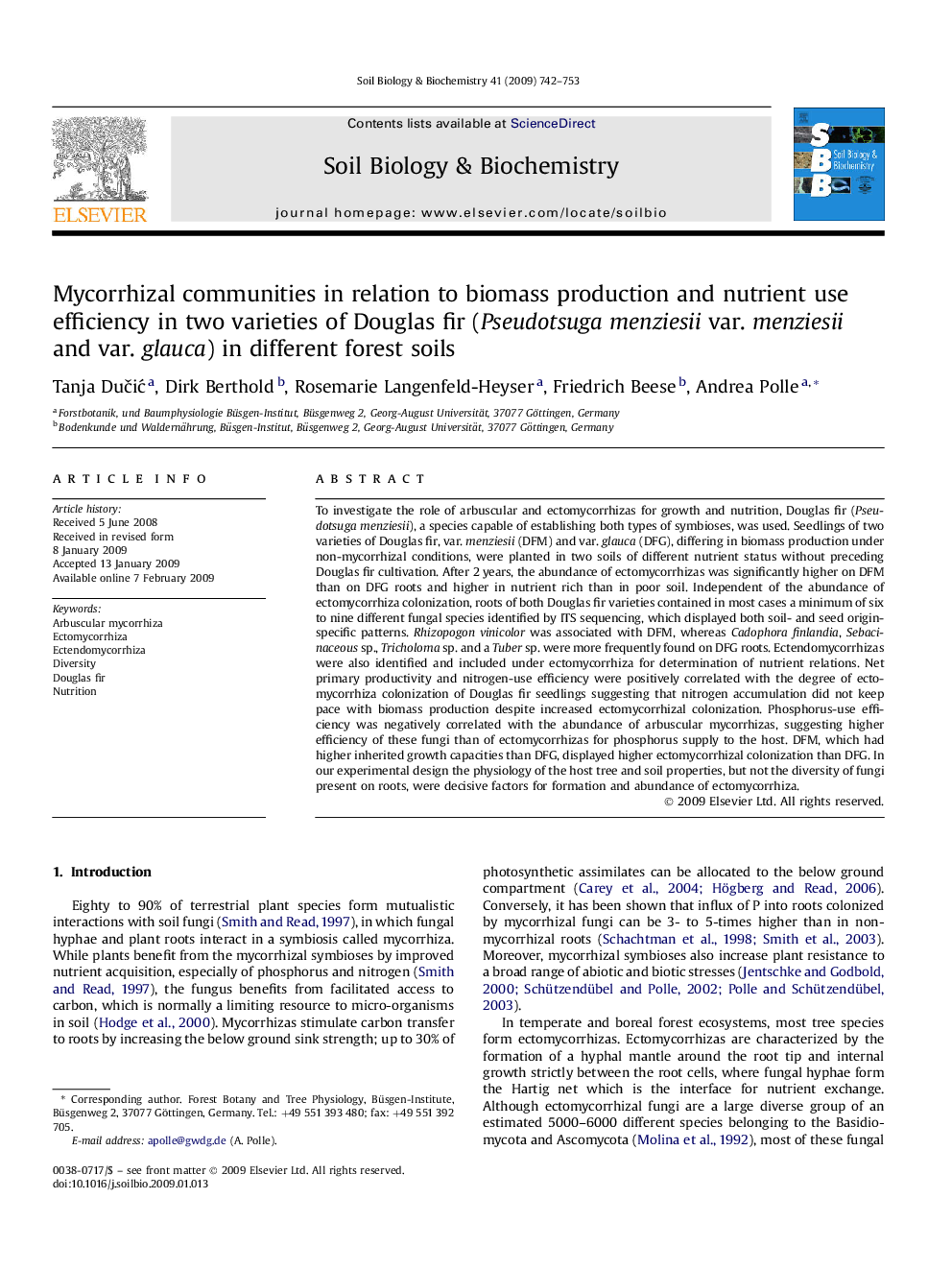| Article ID | Journal | Published Year | Pages | File Type |
|---|---|---|---|---|
| 2026535 | Soil Biology and Biochemistry | 2009 | 12 Pages |
To investigate the role of arbuscular and ectomycorrhizas for growth and nutrition, Douglas fir (Pseudotsuga menziesii), a species capable of establishing both types of symbioses, was used. Seedlings of two varieties of Douglas fir, var. menziesii (DFM) and var. glauca (DFG), differing in biomass production under non-mycorrhizal conditions, were planted in two soils of different nutrient status without preceding Douglas fir cultivation. After 2 years, the abundance of ectomycorrhizas was significantly higher on DFM than on DFG roots and higher in nutrient rich than in poor soil. Independent of the abundance of ectomycorrhiza colonization, roots of both Douglas fir varieties contained in most cases a minimum of six to nine different fungal species identified by ITS sequencing, which displayed both soil- and seed origin-specific patterns. Rhizopogon vinicolor was associated with DFM, whereas Cadophora finlandia, Sebacinaceous sp., Tricholoma sp. and a Tuber sp. were more frequently found on DFG roots. Ectendomycorrhizas were also identified and included under ectomycorrhiza for determination of nutrient relations. Net primary productivity and nitrogen-use efficiency were positively correlated with the degree of ectomycorrhiza colonization of Douglas fir seedlings suggesting that nitrogen accumulation did not keep pace with biomass production despite increased ectomycorrhizal colonization. Phosphorus-use efficiency was negatively correlated with the abundance of arbuscular mycorrhizas, suggesting higher efficiency of these fungi than of ectomycorrhizas for phosphorus supply to the host. DFM, which had higher inherited growth capacities than DFG, displayed higher ectomycorrhizal colonization than DFG. In our experimental design the physiology of the host tree and soil properties, but not the diversity of fungi present on roots, were decisive factors for formation and abundance of ectomycorrhiza.
